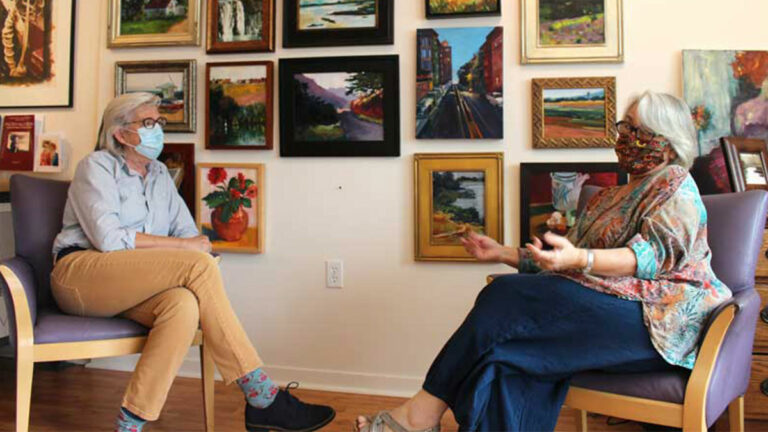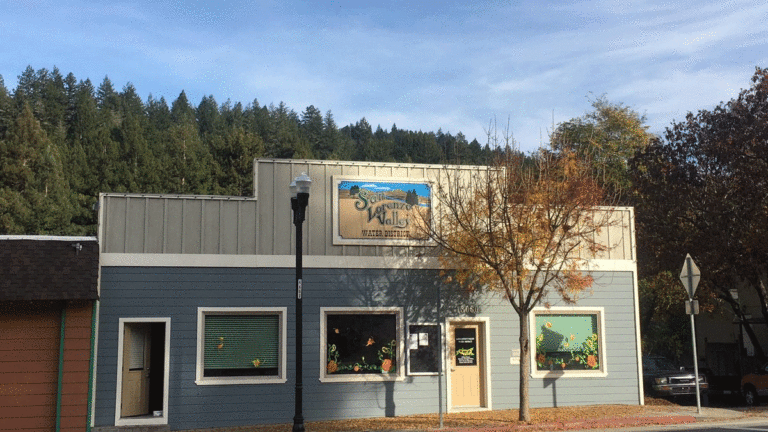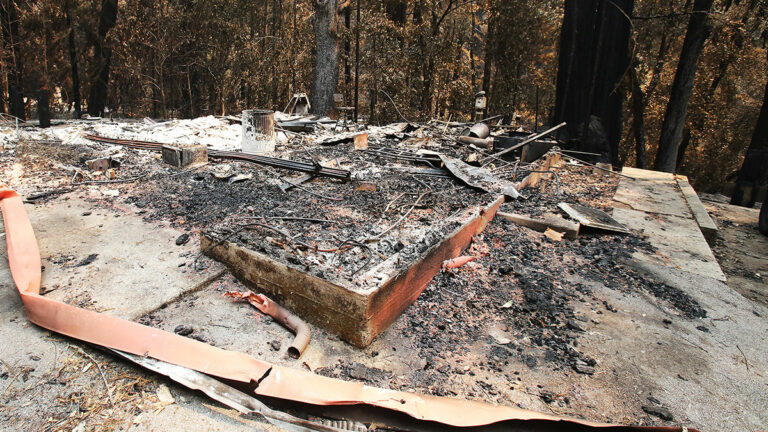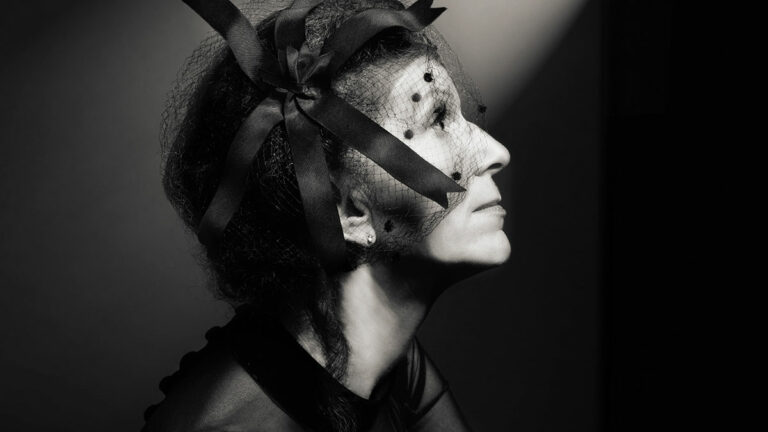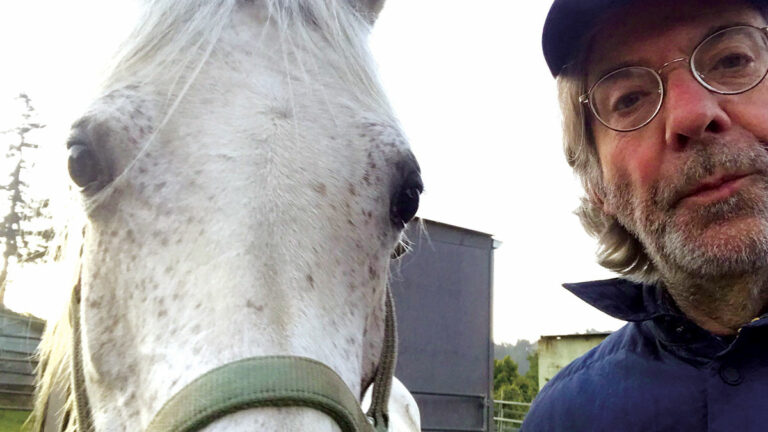A guide to resources in Santa Cruz County:
Living Facilities
There are many types of senior housing options, ranging from residential facilities and assisted living homes to independent living and retirement communities. Learn more about the differences and search for options near you at eldercare.gov (800-677-1116) or seniorfacilityfinder.com.
Alexandria Victoria
226 Morrissey Blvd., Santa Cruz, 429-9137.
Dominican Oaks
3400 Paul Sweet Rd., Santa Cruz, 462-6257, dominicanoaks.com.
Golden Age Convalescent Hospital
523 Burlingame Ave., Capitola, 475-0722.
La Posada
609 Frederick St., Santa Cruz, 429-9230, laposadaretirementcommunity.com.
Maple House
410 Pennsylvania Ave., Santa Cruz, 423-6347, themaplehouse.com.
Oak Tree Villa
100 Lockewood Lane, Scotts Valley, 205-7363, brookdaleliving.com.
Pacific Coast Manor
1935 Wharf Rd., Capitola, 476-0770, covenantcare.com.
Paradise Villa
2177 17th Ave., Santa Cruz, 475-1380, paradisevillaelderlycare.com.
Sunshine Villa
80 Front St., Santa Cruz, 459-8400, sunshinevillaseniorliving.com.
Twin Lakes Manor
777 Volz Lane, Santa Cruz, 477-1100, twinlakesmanor.net.
Valley Haven
2266 Chanticleer Ave., Santa Cruz, 818-8372, valleyhavencare.com.
Valley Heights
925 Freedom Blvd., Watsonville, 722-4884, valleyheights.com.
Westwind Memory Care
160 Jewell St., Santa Cruz, 440-8795, westwindmemorycare.com.
Classes & Activities
Academy of Martial & Internal Arts
1570 Soquel Drive, Santa Cruz, 475-1429, reelingsilk.com.
Awakening Chi
1060 River St., Ste. 111,Santa Cruz, 334-7757, awakeningchi.org.
Bridge Of Hope
P.O. Box 576, Soquel, 464-2362, bridgeofhopefoundation.org.
Chair Yoga with Suzi
Yoga Center Santa Cruz, 428 Front St., Santa Cruz, 234-6791, suzimahler.com.
City of Capitola Recreation Department
4400 Jade St., Capitola, 475-5935, cityofcapitola.org/recreation.
City of Santa Cruz Parks & Recreation Department
323 Church St., Santa Cruz, 420-5270, cityofsantacruz.com.
Dominican Hospital’s Personal Enrichment Program
1555 Soquel Drive, Santa Cruz, 462-7709, dominicanhospital.org.
Lenz Arts
142 River St., Santa Cruz, 423-1935, lenzarts.com.
Santa Cruz County Parks Department
979 17th Ave., Santa Cruz, 454-7901, scparks.com./adult_senior.html.
Simpkins Family Swim Center
979 17th Ave., Santa Cruz, 454-7960, scparks.com.
Watsonville Community Hospital
75 Nielson St., Watsonville, 724-4741, watsonvillehospital.com.
Adult Mental Health Services
Santa Cruz: 1400 Emeline Ave. Bldg. K, Santa Cruz, 454-4170, santacruzhealth.org.
Adult Protective Services (Human Services Department)
1400 Emeline Ave. Bldg. K, Santa Cruz, 454-4101, santacruzhumanservices.org.
Family Service Agency of the Central Coast
104 Walnut Ave. Ste. 208, Santa Cruz, 423-9444; 11 Alexander St. Ste. D, Watsonville, 728-9970 (24-hour multi-lingual crisis line), fsa-cc.org.
Hospice of Santa Cruz County
940 Disc Drive, Scotts Valley, 430-3000, hospicesantacruz.org.
Mental Health Client Action Network
1051 Cayuga St., Santa Cruz, 469-0462, mhcan.org.
Santa Cruz Vets Center
1350 41st Ave. Ste. 102, Capitola, 464-4575, santacruzhumanservices.org, va.gov.
Women’s Crisis Support—Defensa de Mujeres (Monarch Services)
1685 Commercial Way, Santa Cruz, 425-4030; 233 E. Lake Ave., Watsonville, 722-4532, (888) 900-4232 (crisis line), wcs-ddm.org.
Financial Services
Bay Federal Credit Union
Multiple Locations, 479-6000, bayfed.com.
Countryside Financial
464-6464, countrysidefinancial.com.
Edward Jones Investments
Multiple locations, edwardjones.com.
Main Street Realtors
2567 Main St., Soquel, 462-4000, mainstrealtors.com.
Pacific Inland Financial Inc.
5161 Soquel Drive, Soquel, 475-2600, pacificinland.com.
Santa Cruz Home Finance
1535 Seabright Ave., Santa Cruz, 425-1250, santacruzhomefinance.com.
Santa Cruz Community Credit Union
324 Front St., Santa Cruz, 425-7708, scccu.org.
Terry Ballantyne/Sereno Group Real Estate
2407 Porter St., Soquel, 588-8485, terryballantyne.com, navigatingolderhood.com.
Food and Nutrition
Agri-Culture
141 Monte Vista Ave., Watsonville, 722-6622, agri-culture.us.
Grey Bears
2710 Chanticleer Ave., Santa Cruz, 479-1055, greybears.org.
Carnation Cafe Senior Lunch at Louden Nelson Community Center
301 Center St., Santa Cruz, 427-0901, cityofsantacruz.com.
Cindy’s Celebrations, Inc.
320 Carrera Circle, Aptos, 479-7509, cindyscelebrations.org.
Community Bridges Adult Care Food Program
236 Santa Cruz Ave., Aptos, 688-8840, communitybridges.org.
Elena Baskin Live Oak Senior Center
1777 Capitola Rd., Santa Cruz, 476-3272, liveoakseniorcenter.com.
Highlands Senior Dining Center at the Senior Center of San Lorenzo Valley
8500 Hwy. 9, Ben Lomond, 336-8900.
Human Services Department
1020 Emeline Ave. Bldg. B, Santa Cruz; 18 W. Beach St., Watsonville, (888) 421-8080, santacruzhumanservices.org.
La Manzana Community Resources
521 Main St. Ste. Y, Watsonville, 724-2997, communitybridges.org/lmcr.
Live Oak Family Resources
1740 17th Ave., Santa Cruz, 476-7284.
Meals on Wheels for Santa Cruz County
Contact Community Bridges for meal times, locations and drop-off information: 464-3180, communitybridges.org/meals.
Mountain Community Resources
6134 Hwy. 9, Felton, 335-6600, communitybridges.org/mcr.
Pajaro Rescue Mission
111 Railroad Ave., Royal Oaks, 724-9576, teenchallengemb.org.
Second Harvest Food Bank
800 Ohlone Parkway., Watsonville, 722-7110, thefoodbank.org. Food hotline: 662-0991.
Scotts Valley Senior Center
370 Kings Village Rd., Scotts Valley, 438-8666.
Watsonville Senior Center
114 E. 5th St., Watsonville, 722-1333.
Healthcare & Health Resources
Aimée Gould Shunney, ND
Licensed Naturopathic Doctor. 740 Front St. #130, Santa Cruz, 465-9088, drshunney.com.
Alzheimer’s Disease Care Center at Elderday
100 Pioneer St. Ste. C, Santa Cruz, 458-3481, communitybridges.org.
Arthritis Foundation Great West Region
90 New Montgomery St. Ste. 710, San Francisco. (415) 915-2862, arthritis.org.
Cabrillo College Stroke & Disability Learning Center
6500 Soquel Drive, Aptos, 477-3300, cabrillo.edu/academics/strokecenter.
Cancer Detection Program: Every Woman Counts Central Coast Regional Contractor: Community Health Partnership
1401 Parkmoor Ave., Ste. 200 San Jose, (408) 556-6605, dhs.ca.gov/cancerdetection.
Carol Shwery, DC CCN
831 Bay Ave. Ste. 1E, Capitola, 476-6906, drcarolshwery.com.
Central California Alliance for Health
1600 Green Hills Rd. Ste. 101, Scotts Valley, 430-5500, ccah-alliance.org.
Dakota Health Center
111 Dakota Ave. Ste. 2, Santa Cruz, 429-1188.
Diabetes Health Center
85 Nielson St. Ste. 201, Watsonville, 763-6445, pvhealthtrust.org.
Dominican Hospital
1555 Soquel Drive, Santa Cruz, 462-7700, dominicanhospital.org.
EyeCare America Seniors Eye Care Program
(877) 887-6327, eyecareamerica.org.
Health Projects Center
1537 Pacific Ave. Ste. 300, Santa Cruz, 459-6639, hpcn.org.
Hearing Aid Helpline
(734) 522-7200 ext. 2, ihsinfo.org.
Hearts & Hands, Post Acute Care & Rehab Center
2990 Soquel Ave., Santa Cruz, 479-9000.
Holistic Pelvic Care
515 Broadway, Santa Cruz, 431-3826, kelleylinn.com.
Homeless Persons Health Project
115-A Coral St., Santa Cruz, 454-2080, santacruzhealth.org.
Horsnyder Pharmacy
1226-A Soquel Ave., Santa Cruz, 458-1400, horsnyder.com.
Katz Cancer Resource Center at Dominican Hospital
3150 Mission Drive Fl. 1, Santa Cruz, CA, 462-7770.
Leukemia & Lymphoma Society
100 W San Fernando St. Ste. 365, San Jose, (408) 490-2666, lls.org.
LifeCare Management & Caregiver Referrals
200-1870 or 650-714-6377, lifecaremanagement.com.
Medi-Cal
18 W. Beach St., Watsonville, 454-4036, medi-cal.ca.gov. Also, see Central California Alliance for Health.
Medicare
(800) 633-4227, medicare.gov.
Natural Foundations
4450 Capitola Rd. Ste. 105, Capitola, 325-0202, naturalfoundations.com.
Optimage Health Inc.
930 Mission St., Santa Cruz, 421-0197, optimagehealth.com.
Orthonorcal
4140 Jade St. Room 100, Capitola, 475-4024, orthonorcal.com.
Pacific Pulmonary Services
440 Westridge Drive, Watsonville, 722-3001, ppsc.com.
Parkinson’s Support Group in Santa Cruz
477-9412, 708-2906, parkinsons.stanford.edu.
Physicians Medical Group of Santa Cruz
100 Enterprise Way Ste. C110, Scotts Valley, 465-7800, pmgscc.com.
Rejuvenate Medi Spa
304 Lincoln St., Santa Cruz, 226-2108, navigatormedical.com.
Santa Cruz AIDS Project
542 Ocean St. Ste. 1, Santa Cruz, 427-3900, scapsite.org.
Santa Cruz Core Fitness and Rehab
317 Potrero St., Ste. C, Santa Cruz, 425-9500, santacruzcore.com.
Santa Cruz County Prostate Cancer Support Group
1555 Soquel Drive, Education Bldg., Santa Cruz, 462-7770, scprostate.org.
Santa Cruz Naturals
9077 Soquel Drive, Aptos, 688-7266, santacruzcannabis.com.
Side By Side Memory Care
687-8121, sidebyside.info.
Sutter Maternity & Surgery Center of Santa Cruz
2900 Chanticleer Ave., Santa Cruz, 477-2200, sutterhealth.org/smscsc.
Vista Center for the Blind and Visually Impaired
413 Laurel St., Santa Cruz, 458-9766, vistacenter.org.
Watsonville Community Hospital
75 Nielson St., Watsonville, 724-4741, watsonvillehospital.com.
Watsonville Pharmacy Medical Supplies and Gifts
1433 Freedom Blvd., Watsonville, 728-1818, watsonvillepharmacy.com.
Westside Pharmacy Medical Supplies and Gifts
1401 Mission St., Santa Cruz, 423-7175. westsidepharmacyrx.com.
WomenCARE
2901 Park Ave., Ste. 1A, Soquel, 457-2273, womencaresantacruz.org.
Housing
Bay Avenue Senior Apartments
750 Bay Ave., Capitola, 464-6435.
Habitat for Humanity, My House My Home
469-4663, habitatmontereybay.org.
Homeless Services Center
115-A Coral St., Santa Cruz, 458-6020, santacruzhsc.org.
Housing Authority of Santa Cruz County
2160 41st Ave.. Capitola, CA, 454-9455, hacosantacruz.org.
Mobile Home Commission
701 Ocean St., Santa Cruz, 454-2772, sccounty01.co.santa-cruz.ca.us/mhc/index.html.
Mobile Home Ombudsman’s Office
(916) 263-6928, hcd.ca.gov.
Senior Housing Finder
462-1433, seniornetworkservices.org.
The Shelter Project of the Community Action Board
501 Soquel Ave., Ste. E, Santa Cruz, 457-1741; 406 Main St. Suite 207, Watsonville, 728-4634, cabinc.org.
Valley Haven
2266 Chanticleer Ave., Santa Cruz, 818-8372, valleyhavencare.com.
In-Home Services
Care from the Heart Home Service
3143 Paul Sweet Rd., Santa Cruz, 476-8316, carefromtheheart.net.
ComForcare Home Care
100 Doyle St. Ste. F, Santa Cruz, 427-1553, comforcare.com.
Companion for Life /Lifeline Project
234 Santa Cruz Ave., Aptos, 688-9217, seniorscouncil.org/programs/companionforlife.
Dominican Home Health
8030 Soquel Ave. Ste. 104, Santa Cruz, 465-7988, dominicanhospital.org.
Familiar Surroundings
2901 Park Ave. Ste. C3, Soquel, 480-3990, fshomecare.com.
Helping Hands Senior Home Repair Program
427-5070, scvolunteercenter.com/programs/elderly-disabled/helping_hands.
Home Helpers
343 Soquel Ave. #100, Santa Cruz, 477-6265, homehelpers.com.
Home Instead Senior Care
3912 Portola Drive Ste. 3, Santa Cruz, 476-9500, homeinstead.com.
Heartland Hospice
824 Bay Ave. Ste. 40, Capitola, 476-2158, heartlandhospice.com.
Hospice of Santa Cruz County
940 Disc Drive, Scotts Valley, 430-3000, hospicesantacruz.org.
In-Home Support Services (IHSS) Public Authority
1400 Emeline Ave. Bldg. K, Santa Cruz, 454-4101; 12 W. Beach St., Watsonville, 763-8800, santacruzhumanservices.org.
Lifespan Care Well-Being Program
600 Frederick St., Santa Cruz, 469-4900, lifespancare.com.
Safe At Home Senior Care
820 Bay Ave., Capitola, 462-3500, safeathomeseniorcare.com.
Senior Network Services Registry
1777-A Capitola Rd., Santa Cruz, 462-1433, seniornetworkservices.org.
Visiting Angels
5274 Scotts Valley Drive, Scotts Valley, 430-0616, visitingangels.com/centralcoast.
Visiting Nurses Association (VNA) of Santa Cruz County
2880 Soquel Ave. Ste. 10, Santa Cruz, 479-6620, santacruzvna.org.
Volunteering
Big Brothers Big Sisters of Santa Cruz County
1500 41st Ave. Ste. 250, Capitola, 464-8691, santacruzmentor.com.
Grey Bears
2710 Chanticleer Ave., Santa Cruz, 479-1055, greybears.org.
CASA
813 Freedom Blvd., Watsonville, 761-2956, casaofsantacruz.org.
Dominican Hospital Volunteer Services
1555 Soquel Drive, Santa Cruz, 462-7740, dominicanhospital.org.
Seniors Council of Santa Cruz and San Benito Counties
234 Santa Cruz Ave., Aptos, 688-0400, seniorscouncil.org.
Suicide Prevention Service
104 Walnut Ave. Ste. 208, Santa Cruz, 459-9373, fsa-cc.org.
Volunteer Center of Santa Cruz County’s Retired Senior Volunteer Program
1740 17th Ave., Santa Cruz, 427-5070; 349 Main St. Suite 208, Watsonville, 722-6708, scvolunteercenter.org.



